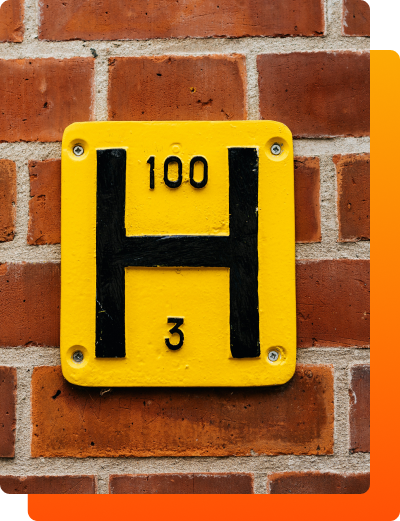Fire Hydrants in the UK: What you need to know
- Fire Sprinkler Servicing Ltd

- Aug 4
- 4 min read
Fire hydrants are one of those things we often walk past without giving a second thought, until there’s a fire. They’re an essential part of the UK’s fire safety system, giving emergency services quick access to water when they need it most. But how do fire hydrants actually work? Do you need one on your property? And how often should they be checked?
At Fire Sprinkler Servicing we have the know how, so let’s break it all down.
What exactly is a Fire Hydrant?
A fire hydrant is a connection point to the water main, designed to give firefighters easy access to water in case of a fire. In the UK, most hydrants are hidden underground, marked by a yellow plate with a black “H” on it. That plate shows the size of the water main and how far away the hydrant is.
When firefighters arrive on scene, they can quickly connect to the hydrant using special tools, giving them access to thousands of litres of water to help control the blaze.

Do I need a fire hydrant?
Good question! Not everyone needs a fire hydrant on their property, but in some cases, it’s a must.
You might need a private fire hydrant if:
Your building is part of a new development that’s far from public hydrants
It’s a high-risk building, like a school, warehouse or care home
The local water supply pressure isn’t strong enough to meet fire service needs
Your local authority or planning department requires one for safety compliance
If any of these apply, it’s worth checking with your local fire service or a fire safety consultant. And if you do need one, it’s your responsibility to keep it in good working condition, which means regular fire hydrant servicing and maintenance.
How do Fire Hydrants work?
When the fire service needs water, they use a hydrant key to open a valve inside the hydrant. This opens the connection to the water main and releases a powerful flow of water. Firefighters then attach a standpipe and hose and get to work.
There are two main types:
Dry-barrel hydrants: Water stays out of the hydrant until it’s opened, which is ideal for preventing freezing in colder climates.
Wet-barrel hydrants: These stay full of water and are more common in warmer regions (though not often seen in the UK).
Most UK fire hydrants are underground dry-barrel ones, to deal with our lovely British weather.
What should the flow rate of a Fire Hydrant be?
The flow rate is important when fighting fires. Here’s what it should be in the UK:
Housing Developments
A minimum flow rate of 8 litres per second (480 litres per minute) is required for detached or semi-detached homes up to two storeys.
For units with more than two storeys, the flow rate should increase up to 35 litres per second (2100 litres per minute), delivered from a single hydrant located within the development.
Transport Facilities
For lorry or coach parks, multi-storey car parks, and service stations, the required flow rate is a minimum of 25 litres per second (1500 litres per minute).
This must be available from any hydrant either within the development or within 90 metres driving distance from the site.
Industrial Estates
It is recommended that the site's water infrastructure includes pipework with a minimum nominal diameter of 150mm and supports the following flow rates:
Up to 1 hectare: 20 l/sec (1200 l/min)
1 to 2 hectares: 35 l/sec (2100 l/min)
2 to 3 hectares: 50 l/sec (3000 l/min)
Over 3 hectares: 75 l/sec (4500 l/min)
Note: Higher-risk areas may require greater flow rates.
Retail, Office, Leisure, and Tourism Developments
Depending on the size and use of the development, flow rates should range between 20 l/sec (1200 l/min) and 75 l/sec (4500 l/min).
Educational, Health, and Community Buildings
Village Halls:
Minimum of 15 l/sec (900 l/min) from any single hydrant located on the site or within 100 metres driving distance.
Primary Schools and Single-Storey Health Centres:
Minimum of 20 l/sec (1200 l/min) from any single hydrant on the site or within 70 metres.Secondary Schools, Colleges, Large Health Centres, and Community
Facilities:
Minimum of 35 l/sec (2100 l/min) from any single hydrant on the site or within 70 metres.
Caravan and Chalet Sites
A fire hydrant should be located at the main entrance of the site and, if needed, at 300-metre intervals throughout. Each hydrant must provide a minimum of 8 l/sec (480 l/min).
If there is no mains water supply or if pressure/flow is insufficient, an alternative water source must be provided.
Why Fire Hydrant maintenance matters
Like anything mechanical, fire hydrants need regular checks to make sure they’ll work in an emergency. In the UK, this is covered by British Standards (BS9990:2015), and it’s the responsibility of whoever owns the hydrant—often developers, landlords, or site managers.
A typical fire hydrant service includes:
A full visual inspection
Lubrication of mechanical parts
Flow rate and pressure tests
Signage checks
Regular checks help catch problems early, so you’re not stuck with a hydrant that fails when you need it most. Plus, it keeps you compliant with UK fire safety regulations.
Final thoughts
Whether you're managing a site, planning a development, or just want to understand more about your local fire safety setup, fire hydrants are a crucial part of the bigger picture. In the UK, making sure hydrants are accessible, functional, and meet the right flow rates is key to keeping everyone safe.
If you’re not sure whether your hydrant system has been serviced recently, it’s a good idea to speak to a professional. Don’t wait until there’s a fire to find out your hydrant isn’t up to the job. Contact Fire Sprinkler Servicing Today.




Comments